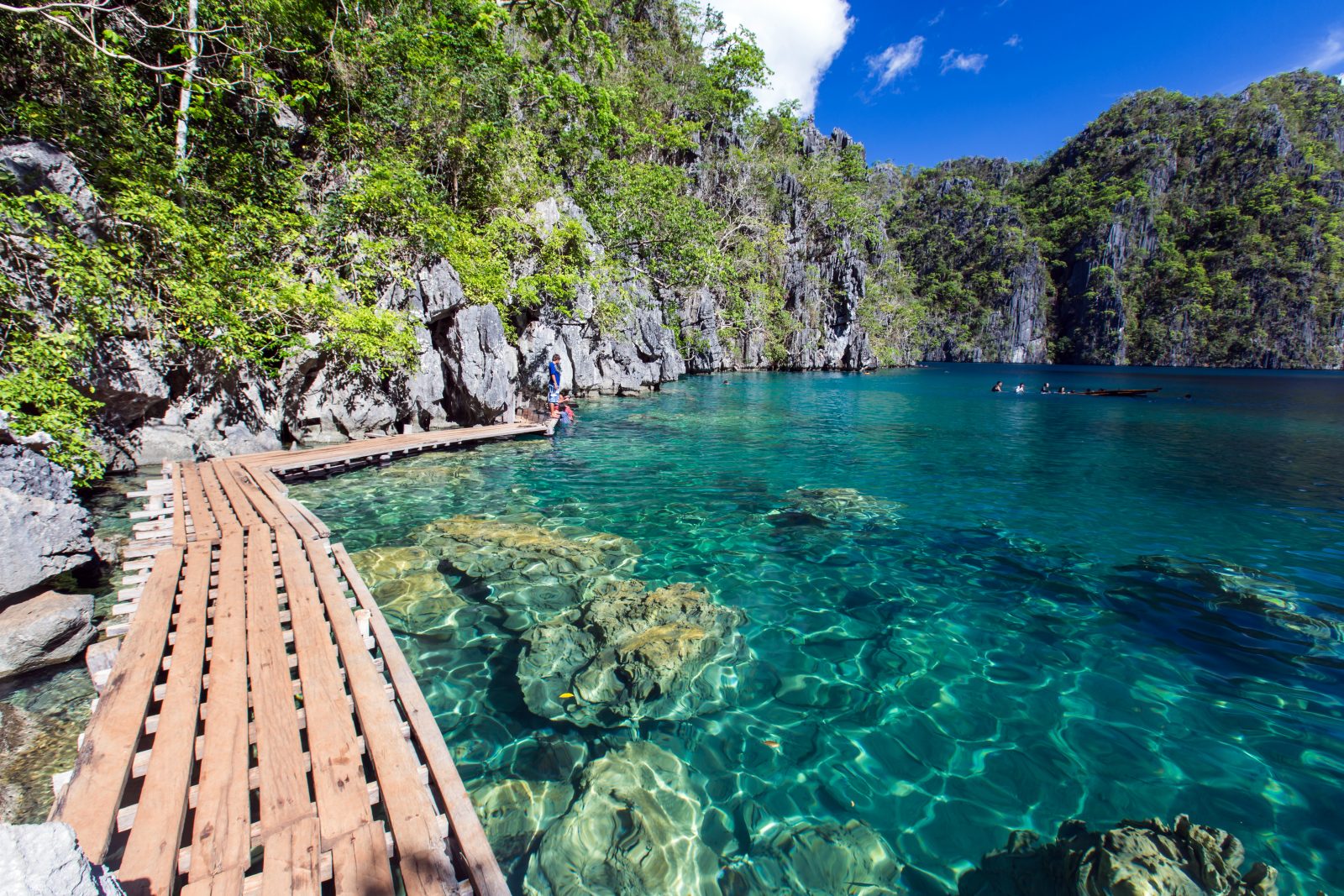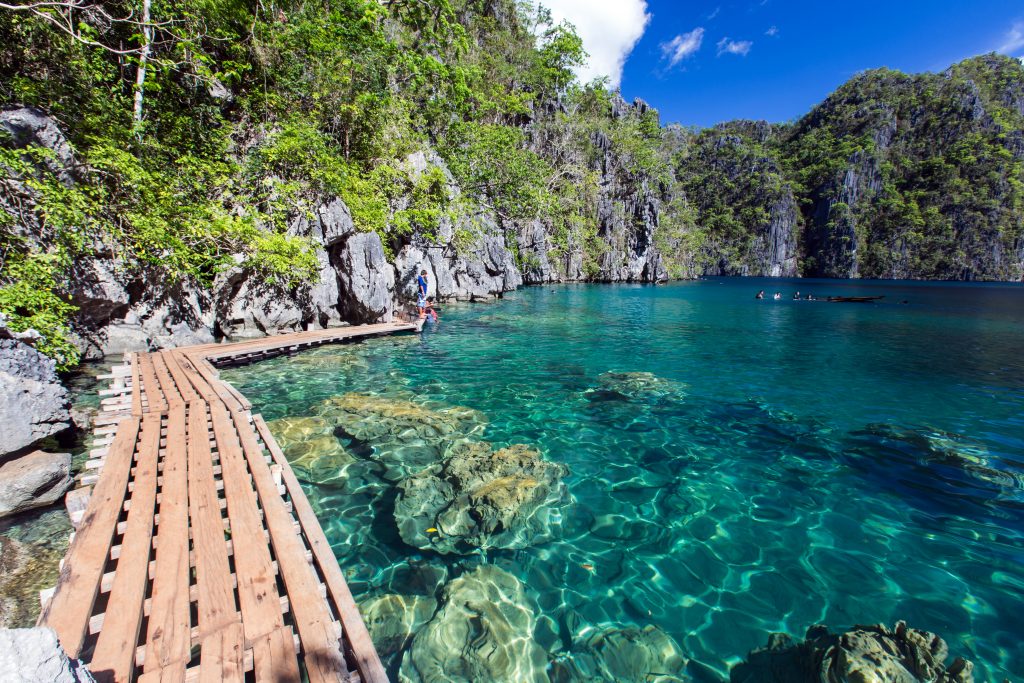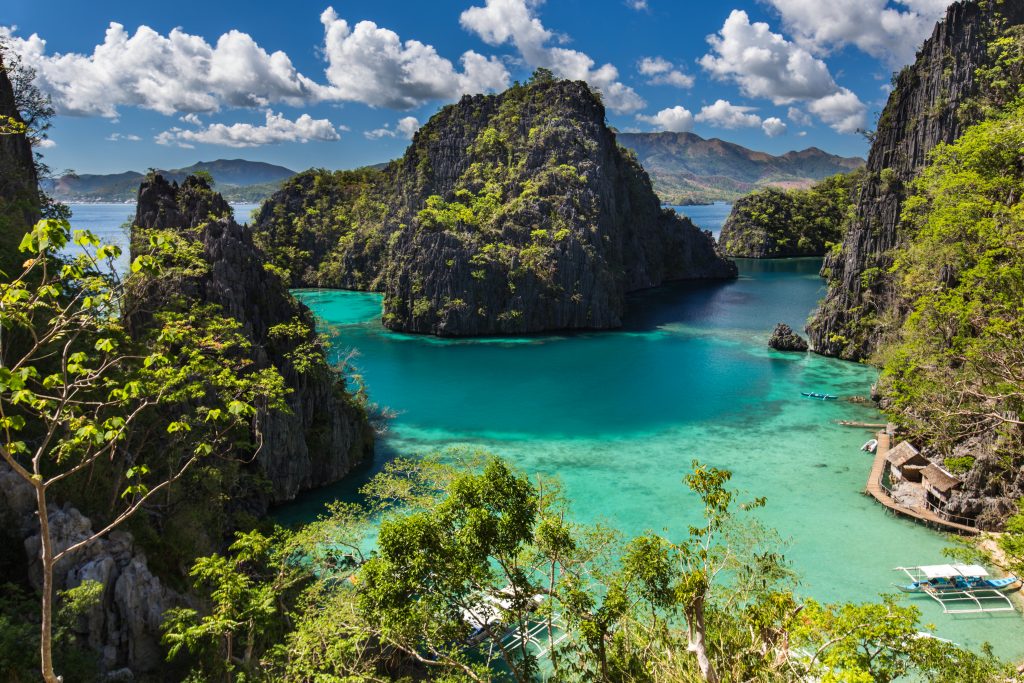Dreamscape in Blue


Crystal-clear waters, lush tropical forest and dramatic landforms conspire to create some of the most beautiful destinations on the planet. One example that has been capturing imaginations for centuries is nestled within soaring cliffs on a remote island in the Philippines.
By Chester A. Burnett
Ancient Filipino myth tells of a giant octopus that guards the island of Coron, a verdant paradise in the province of Palawan. Locals, and tourists alike, will tell you the protective myth exists for good reason as the island is home to a host of natural treasures that must forever be cherished and preserved.
Among the most beautiful gems to be found in all of southeast Asia is Kayangan Lake, also known as the Blue Lagoon. It is unquestionably one of the most mesmerizing bodies of water found anywhere on earth. The setting is simply eyewatering. Surrounded by soaring, jungle-covered peaks, the lake’s stunningly crystal-clear waters contain countless surreal underwater rock formations, crevices, caves, reefs, plants and sea life, creating a delicate aquatic spectacle of remarkable beauty.
Coron is the third largest of the Calamian Islands in norther Palawan Province, located about 170 miles southwest of Manila. It is famous for numerous WWII Japanese shipwrecks, many of which are popular dive spots. Because of its rich historical heritage and vast natural resources, the entire area is protected by numerous legal proclamations.
Kayangan is by far the most visited and photographed place on the island, and one of the most beloved in all of the Philippines. Tourists rave about the lake while to locals it is a sacred place, the ancestral domain of the Tagbanua people, who are referred to as the guardian of Coron.
They believe in Panyain, meaning spirits that dwell in lakes, trees and the sea. Given the remarkable beauty of Kayangan Lake and its surroundings, it’s easy to see why so many people are inspired by the experience of being there, and are passionate about preserving the natural scenery and biological diversity.

Appreciating nature is a source of pride and national passion in the Philippines. According to the Convention on Biodiversity:
“The Philippines is one of 18 mega-biodiverse countries of the world, containing two-thirds of the earth’s biodiversity and between 70% and 80% of the world’s plant and animal species. The Philippines ranks fifth in the number of plant species and maintains 5% of the world’s flora. The Philippines is also one of the world’s biodiversity hotspots with at least 700 threatened species, thus making it one of the top global conservation areas.”
In 1998, Kayangan Lake region was awarded the Certificate of Ancestral Domain, an act that granted the Tagnanua the right and responsibility of managing the area and all of its natural resources.
Kayangan Lake is widely believed to have the clearest water in all of Asia. Surprising to some, its water is brackish, with approximately 70:30 fresh to saltwater. The salt content ads buoyancy, making it a great place for visitors to float among the mesmerizing underwater scenery. Averaging 10 meters deep you are never far from the formations and abundant aquatic flora and fauna.
Many visitors rent bamboo rafts to explore the lake, while others stroll along the elevated wooden paths that hug the shore and meander through the forest. Whatever the conveyance, time spent at Kayangan Lake is to be immersed in layers of bucolic reflection and tranquility.
Accessing the lake does require a vigorous 10-minute hike up 150 steps. Along the way visitors are treated to stunning views of Coron Bay with its turquoise waters reflect the surrounding cliff and peaks and cascading greenery.
While no one reports any encounters with guardian octopi, the locals are said to be very proud and protective of their paradise home, and rightly so.
Notes to travelers:
If you’ve never been to the Philippines or even considered going there, you might be surprised to find out what a great place it is to visit.
The country consists of 7,641 islands of widely varying sizes, landscapes, population density (2000 are inhabited) and even culture. I’ve been there a half-dozen times and have always enjoyed the gorgeous tropical scenery, ease of travel, and especially the warmth of the people.
Nearly 70% of the population speaks English, which is a good thing because the Filipino native tongue, Tagalog, is famously difficult to learn. They welcome guests and the country is relatively safe, even though the capital, Manilla, does have areas with extreme poverty, high crime rates, dense population and pollution.
It’s not a place where you want to run afoul of law enforcement. Anti-drug laws are strictly enforced. Harsh treatment of criminals and even ruthless law enforcement are accepted parts of the culture.
For those of us who deliberately stay out of trouble, it is a great place to travel on a budget, and is rated one of the most desirable landing spots for U.S. expatriates.
I’m personally drawn to the amazing water environments of the Philippines. Kayangan Lake is a great example, but it is far from alone. The country is a haven of countless pristine beaches, great fishing and diving, all set amongst abundant tropical greenery. Ocean waters are fed by intricate systems of streams and rivers, with scenic waterfalls abounding.
Chester A. Burnett is a Los Angeles-based writer, world traveler, master machinist, motorcycle enthusiast and blues harmonica player. He is quick to point out that his intelligence is not artificial.
Opening photo by Udompeter | Shutterstock; lower photo by Livre Partida | Shutterstock









